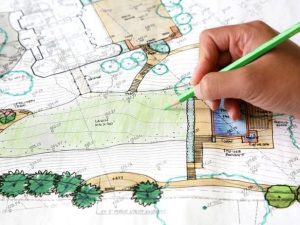 There is something so zen, so relaxing about a garden space that’s been well-put together. Whether it’s yours to come home to at the end of the day, or one that you wishfully view as you’re taking your neighborhood walks, a well-put together garden is a beautiful thing.
There is something so zen, so relaxing about a garden space that’s been well-put together. Whether it’s yours to come home to at the end of the day, or one that you wishfully view as you’re taking your neighborhood walks, a well-put together garden is a beautiful thing.
You may be wondering, what on earth does this have to do with restumping, reblocking and underpinning? A lot more than you’d think! First of all, Restumping Melbourne is not just dedicated towards reinforcing the structure and foundation of your property. Our goal, our mission, our ethos, is to ensure that your home or business is one that you’re proud of. So this means that we’re creatively driven to share general architecture, interior design and landscaping information with our valued customers and blog readers.
Today’s post isn’t just waxing lyrical about the beautiful gardens out there in your neighborhoods, it’s about empowering you to make it yours! Let’s switch the narrative so that it’s all of the other street inhabitants who are a little green with envy, when they see the exterior of your property.
The key here, is that design is modular. It doesn’t need to be completed in one fell swoop. Rather, you can look forwards to smaller design projects which take up a Sunday afternoon, instead of a whole summer. One of the most popular DIY bodies of work that we’ve seen recently, relate to innovative ways to display your plants. Depending on the size and style of your home, gone are the days when a bed of soil was the only possible home for your gardenias. Instead, you can check out vertical flower and plant beds, like this one, to add some pizzazz to your property. These can be built from pretty much any material, you can even repurpose existing materials that have been sitting in your toolshed for far too long.
Some of you may be aiming to bring the greenery into the interior of your home. If so, you’ll want to check out project number two in this article. 3D installations of plants or flowers are gaining popularity, quickly. There is a growing body of science which supports a tranquil feeling, even if a small footprint of flora is nearby.
Finally, think about maximizing the utilitarian nature of your greenery. As you’re choosing what plants and flowers to integrate into your design, don’t write-off those that are edible. There is some beautiful inspiration on the Web for ways to design herb gardens, and even more recipes that you can leverage for your next big dinner. You’ll feel even better incurring any costs, since the rosemary, the thyme, the paprika, will be common ingredients in meals to come. You can even think about making these portions of your garden sustainable, a great way to provide additional power to your home and take costs off of your monthly bills.
Feeling inspired? What landscaping projects are you working on this season?
